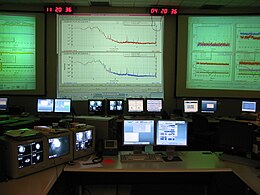LIGO
LIGO is a Gravitational Wave Detection Observatory. The acronym comes from the English LIGO (Laser Interferometry Gravitational-waves Observatory, in Spanish, Observatory of Gravitational Waves by Laser Interferometry). The mission for which it was designed is to confirm the existence of gravitational waves predicted by Einstein's theory of general relativity, and measure their properties. The first direct observation of a gravitational wave occurred on September 14, 2015, identifying itself with the code GW150914, and it was presented to the public on February 11, 2016.
The detection constitutes another ratification of the theory, which predicts the formation of gravitational waves in massive cosmic phenomena such as the collision of galaxies, the explosion of supernovae, the formation of black holes or neutron stars when binary systems with both massive components merge and close to each other. In this last case, the amplitude and frequency of the waves can be predicted, identifying the properties of the emitting object. The Big Bang theory also implies the formation of gravitational waves in the first moments of the Universe and the existence of a background of gravitational waves analogous to background radiation of microwaves or cosmic radiation. In 2017 they received the Princess of Asturias Award for Scientific and Technical Research for their work in detecting gravitational waves.
Detection of Gravitational Waves
- Discovery
On February 11, 2016, the detection of gravitational waves was made public, after confirming the validity of the signals captured on September 14, 2015.
For the first time, scientists have observed ripples in the fabric of space-time called gravitational waves, detected as they reached Earth from a catastrophic event in the distant universe. This confirms an important 1915 prediction of Einstein's general theory of relativity and opens an unprecedented new observational window in the history of human exploration of the cosmos.
Gravitational waves carry information about their primordial origins and about the nature of gravity that cannot be obtained any other way. Physicists have concluded that the detected gravitational waves occurred during the last fraction of a second of the merger of two black holes to produce a single, more massive black hole. This collision of two black holes had been predicted but never observed experimentally.
Gravitational waves were detected on September 14, 2015 at 5:51 a.m. m. Eastern Time (09:51 UTC), at the detectors of the two Double Laser Interferometry Gravitational Wave Observatories (LIGO), located at Hanford Site (Washington) and Livingston (Louisiana), both in the United States. The LIGO observatories are funded by the US National Science Foundation (NSF), and were conceived, built, and operated by the California Institute of Technology (Caltech) and the Massachusetts Institute of Technology. The discovery, accepted for publication in the journal Physical Review Letters, was made by the LIGO Scientific Collaboration (which also includes the German GEO and the "Australian Consortium for Gravitational Interferometric Astronomy") and by the Franco-Italian Virgo Collaboration, with data from the two LIGO detectors.
- Second detection
On December 26, 2015, at 03:38 GMT, both detectors, located more than 3,000 kilometers apart, picked up a very weak signal over the background noise, corresponding to the collision of two 14-inch black holes. 2 and 7.5 times the mass of the Sun, located at a distance of 1.4 billion light years. This signal was announced on June 15, 2016.
LIGO Development
It was started in 1984 by Kip S. Thorne, Feynman Professor at the California Institute of Technology (Caltech), and Rainer Weiss, Professor of Physics at the Massachusetts Institute of Technology (MIT).
It has had development and operations costs of $365 million. In 2004 the project finished the construction of the instruments and the calibration work, beginning to operate. It consists of two observatories:
- Livingston Observatory30°33′46.42′N 90°46′27′′O / 30.5628944, -90.7742417), in Louisiana, which consists of an inteferometric laser system of two perpendicular arms and in vacuum conditions with an optical path of 4 km.a mela thing It is based on detecting the gravitational waves through the tiny movements that produce in the mirrors, which is translated into the generation of a pattern of diffraction in the signal of the interferometer.
- The Hanford Observatory46°27′18.52′′N 119°24′27.56′ / 46.4551444, -119.4076556), located in Richland, in the state of Washington, has an interferometer similar to that of Livingston with a 2 km optical path and half sensitivity.
The duplicity of the observatories makes it possible to identify false detections caused by local effects such as small seismic disturbances or instrument failure.
LIGO was in operation between 2001 and 2010, without detecting gravitational waves. The observatories were dismantled to build an improved version, the Advanced LIGO. The improvements affected the mirrors, the suspension and the seismic isolation system. The construction of Advanced LIGO was completed in February 2015 and its scientific mission began in September of that year, with a sensitivity of four times greater than the initial design.
Gravitational waves originating millions of light-years from Earth should distort the mirror surfaces in interferometers by about 10-18 m (a hydrogen atom is 5×10m in size >-11m).
As already noted, the achievement of the project goal was made public on February 11, 2016, when LIGO released the news of the first direct detection of gravitational waves, which were observed on September 14, 2015 at 09:51 UTC.
Similar projects
In addition to the United States with the LIGO project, other countries are developing similar projects, such as the Italian-French VIRGO detector, located in Pisa, Italy, and GEO, located in Hanover, Germany. Likewise, the design of a space mission capable of detecting gravitational waves from space is being prepared, avoiding the distortions caused by the Earth itself. It has been called LISA (Laser Interferometer Space Antenna) and is a joint project of the space agencies NASA and ESA, whose launch is expected for the year 2034. Such a space observatory would have greater sensitivity and the ability to study objects emitting gravity waves.
Contenido relacionado
Snell's Law
Annex: Astronomical objects
Baroclinia




